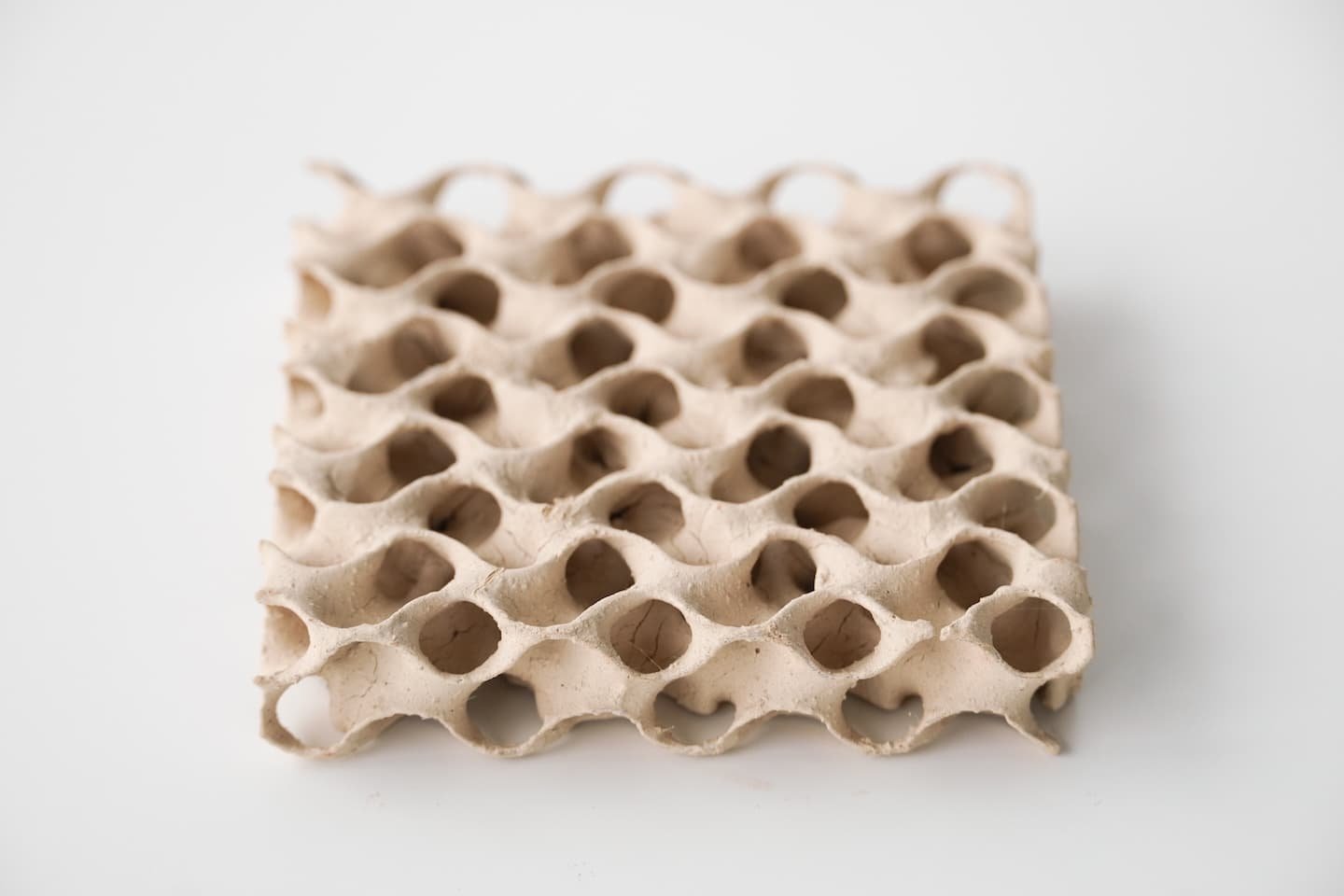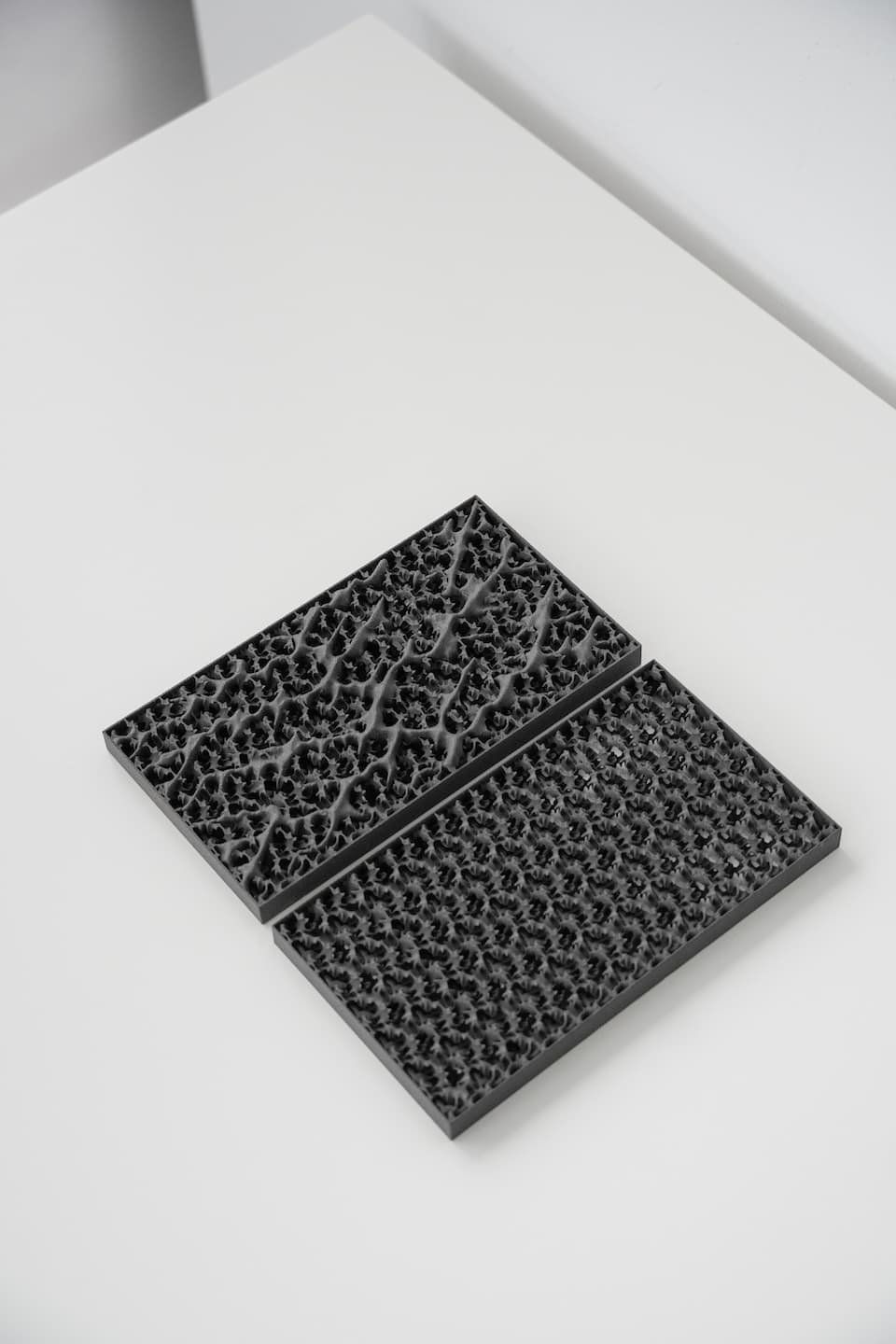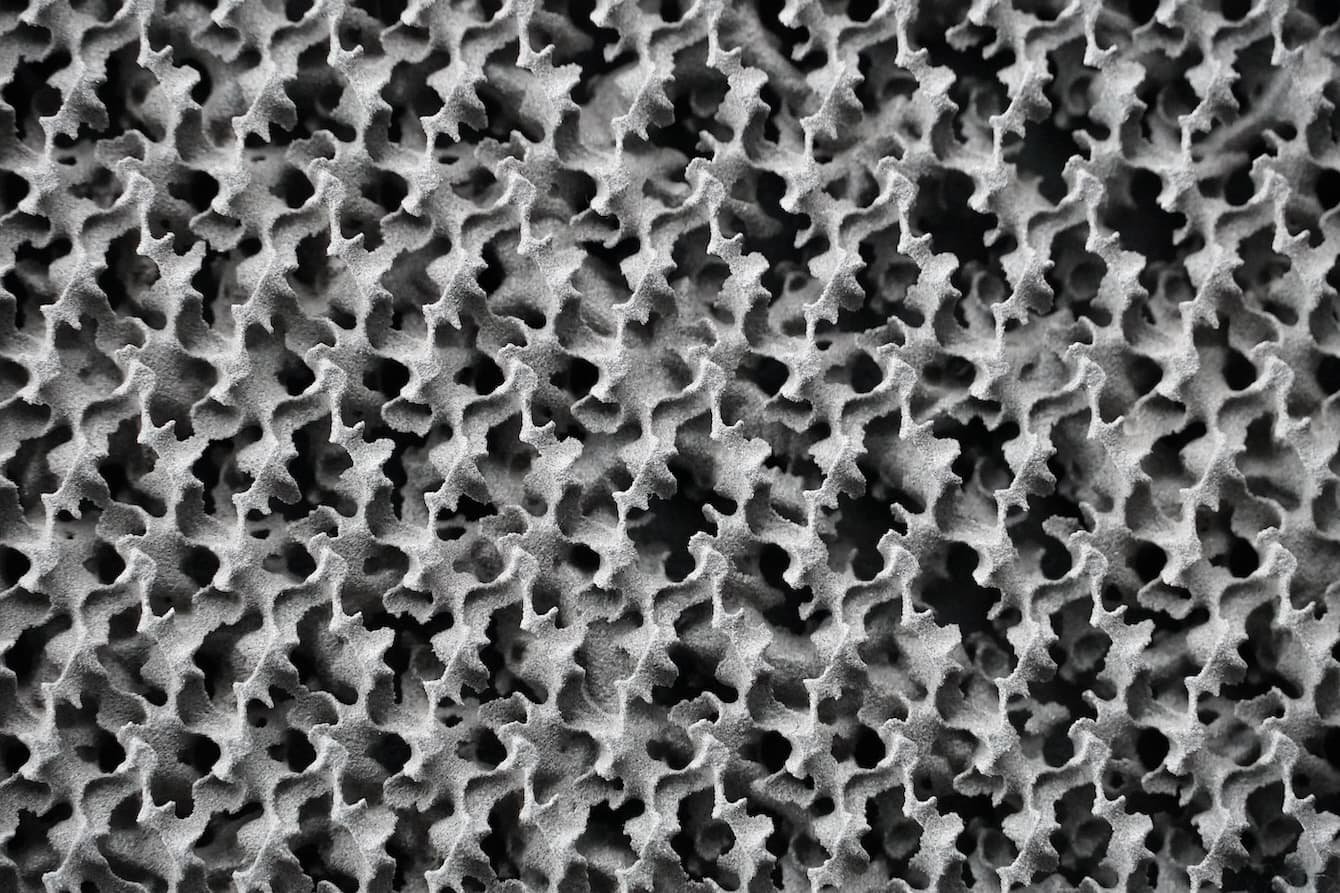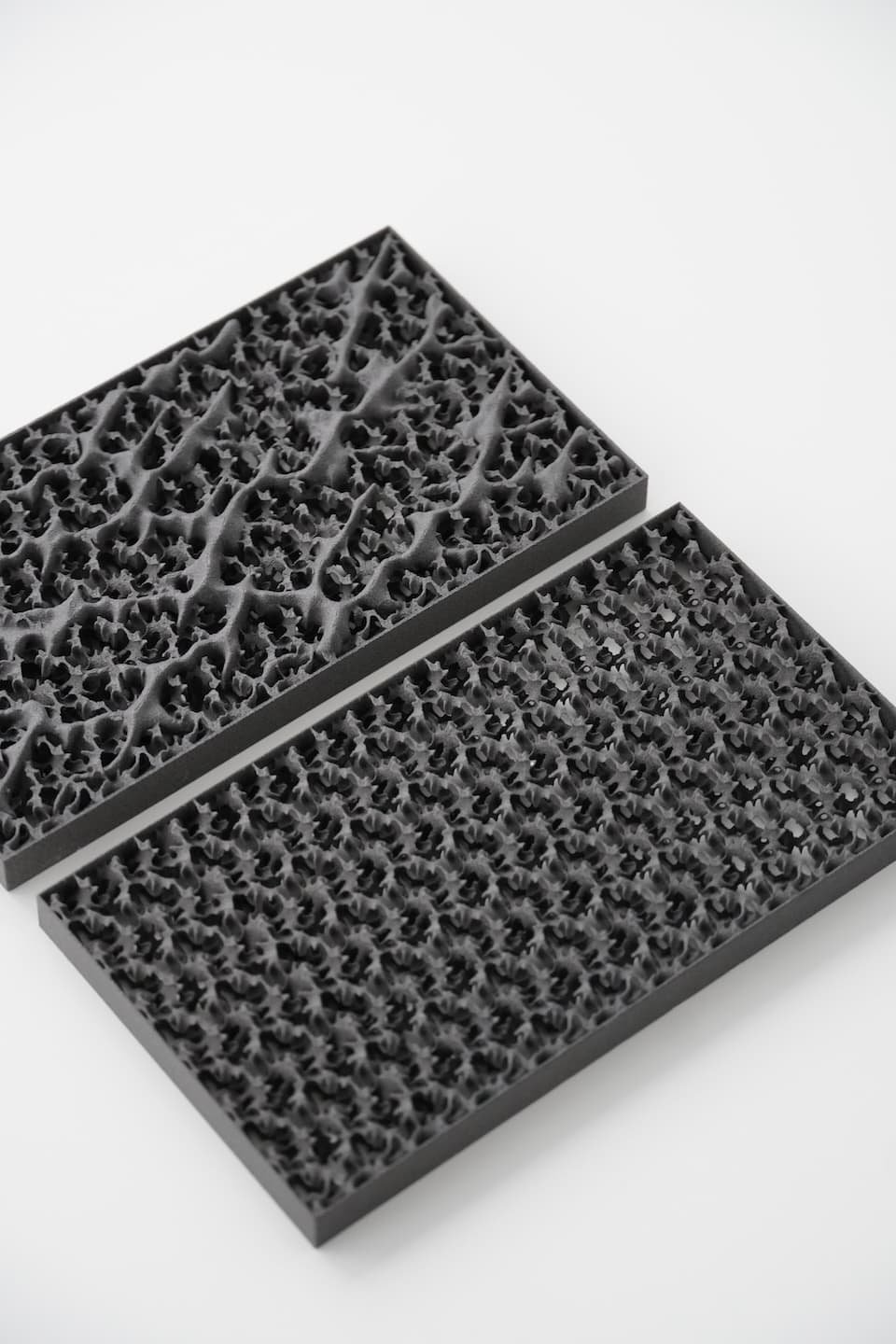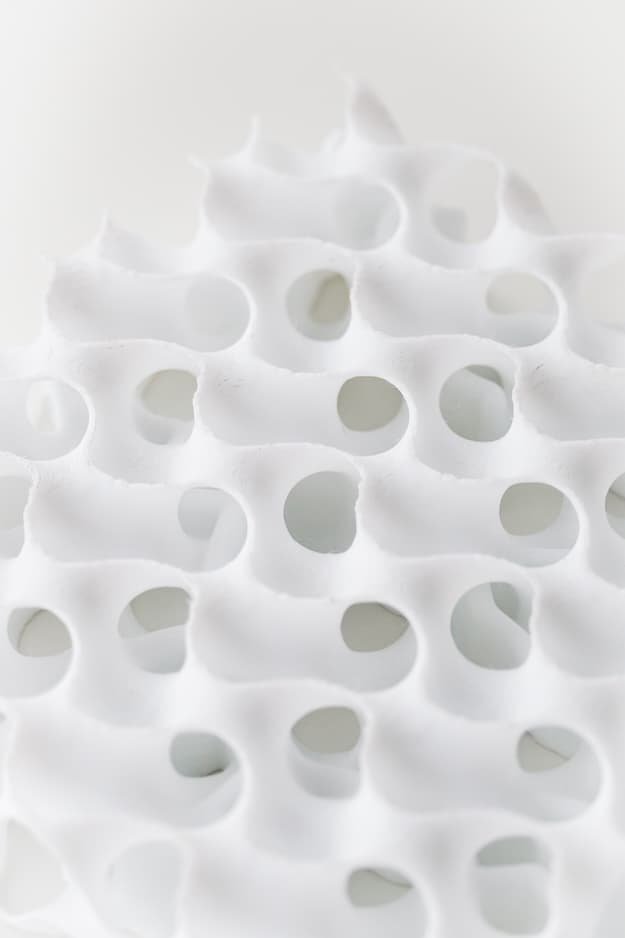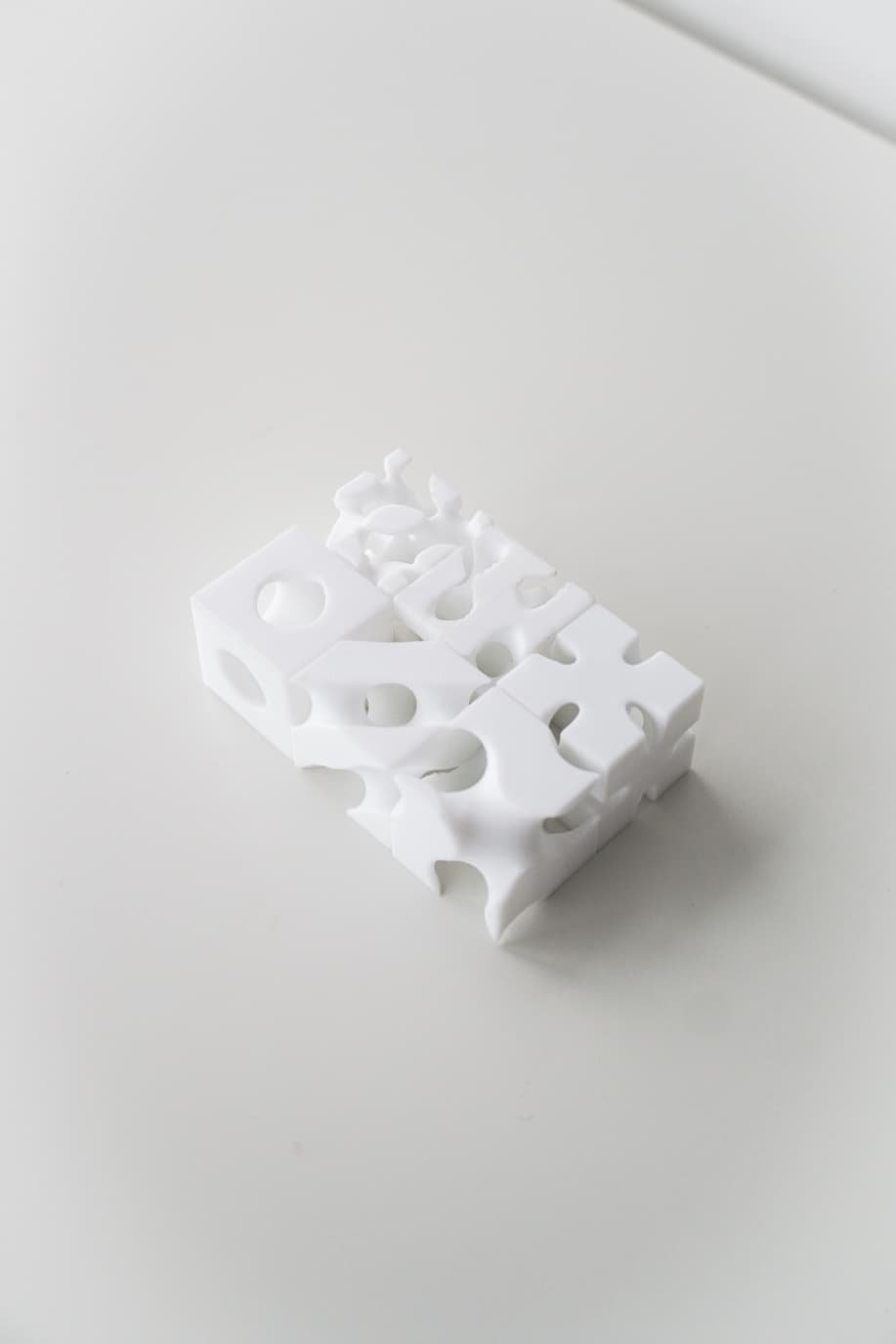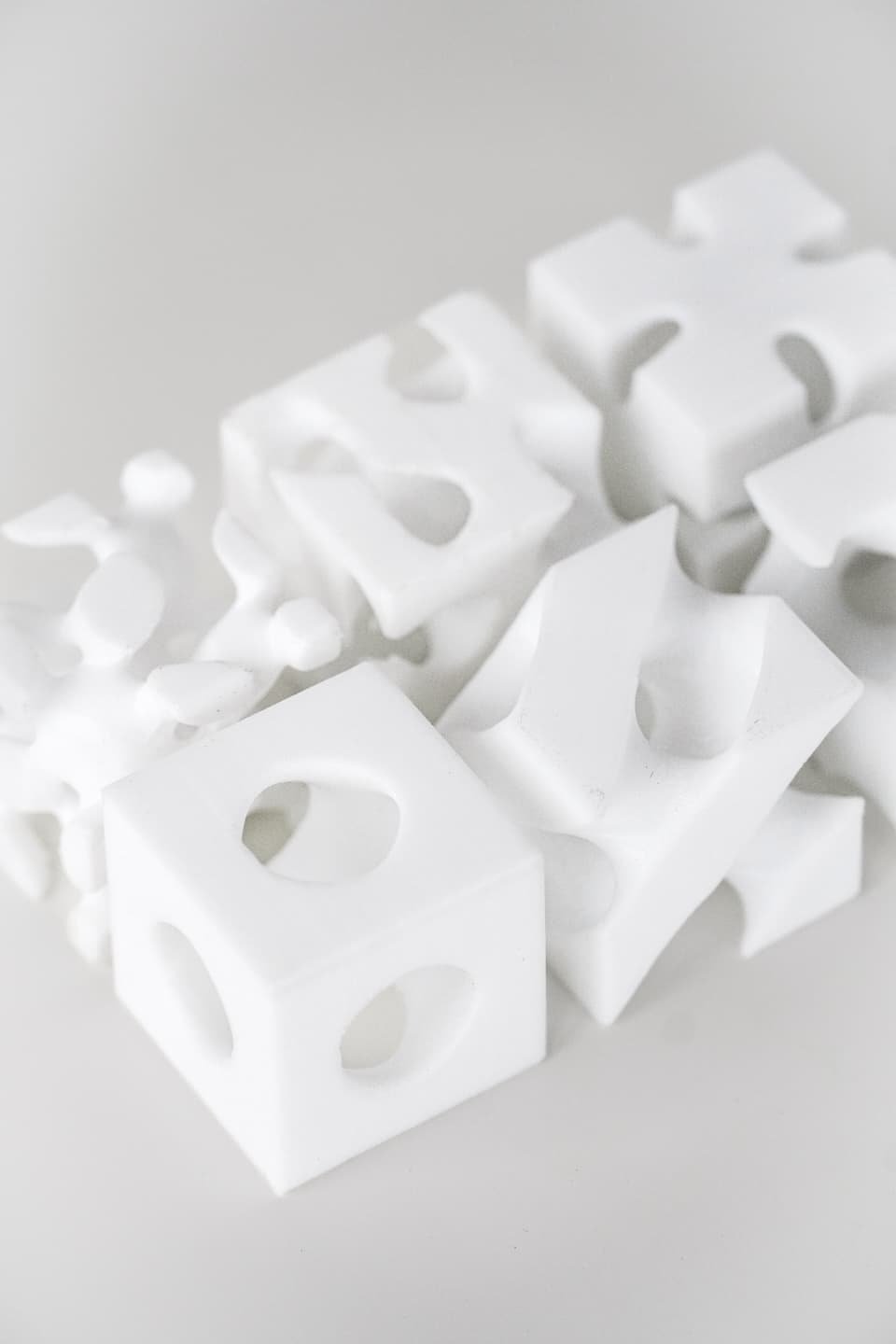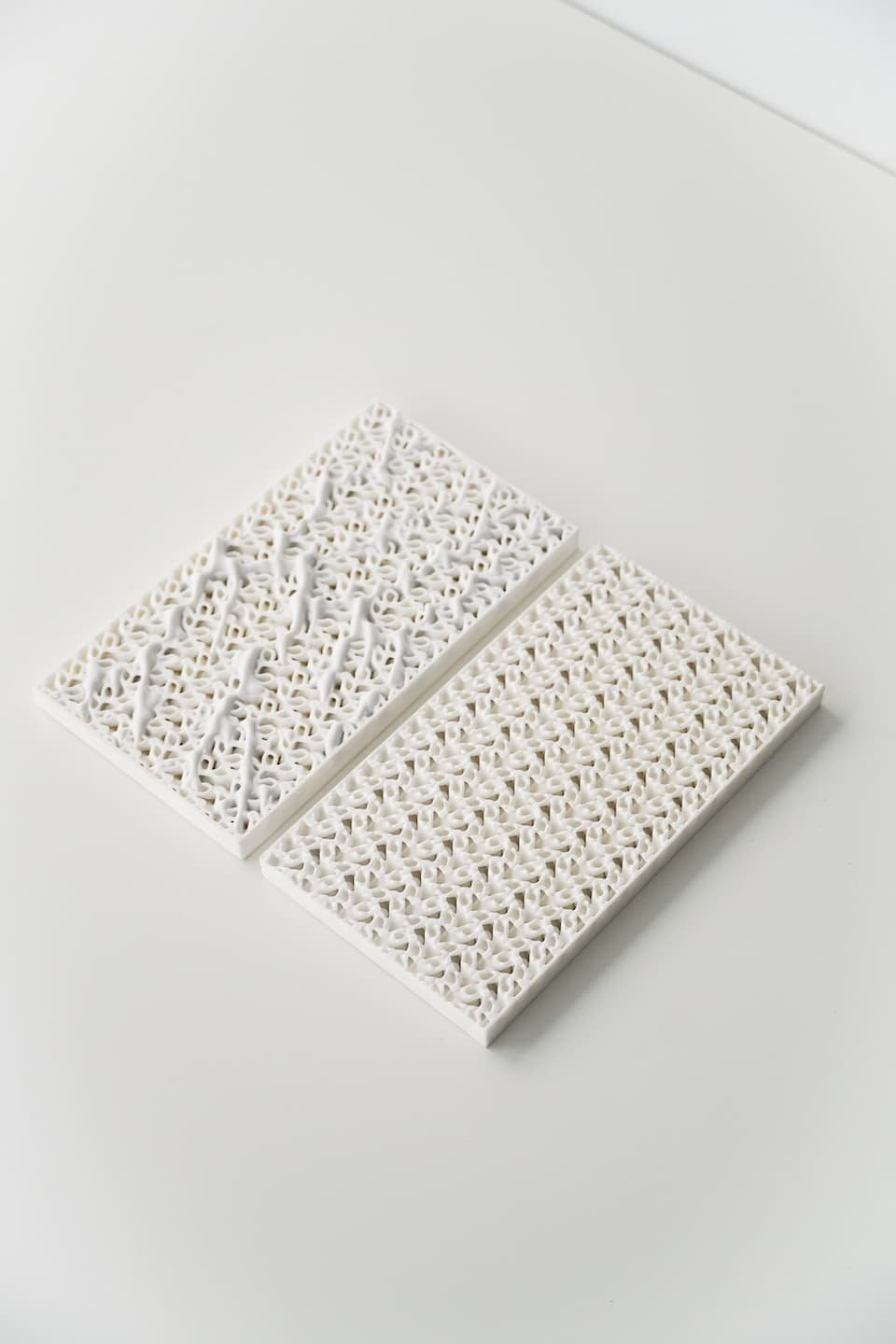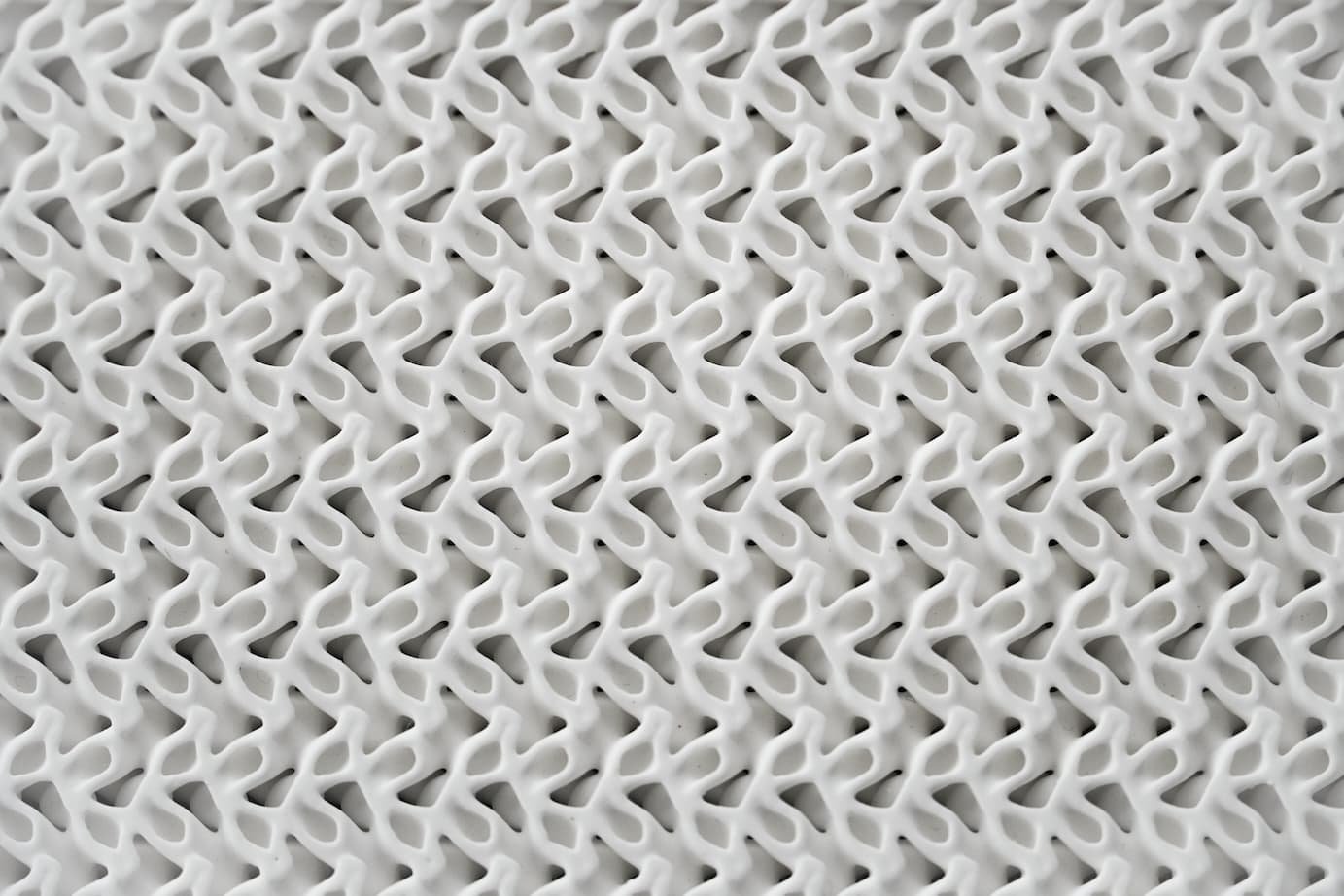Biodigital Material Systems
Modular systems with porous structures and adjustable mechanical properties have the potential to become part of the interior environment. Inspired by nature, triply periodic minimal surface (TPMS) presents a continuous, non-self-intersecting surface as a bioinspired cellular structure. This research explores porous configurations for designing hybrid 3D objects with computational tools that adopt a progressive approach based on 3D morphology to establish interactions between living organisms and synthetic materials. This work demonstrates how TPMS porous structures can be modularized into 3D shapes, which are suitable spaces for moss growth, providing favorable water, light, and temperature conditions. We aim to achieve a symbiotic relationship where living systems and digitally designed materials enhance each other's properties.
Isomorphism and Heterogeneity
Enza Migliore, Ran Che
Exhibited at “Habits of the Anthropocene”, organized by Association for Computer-Aided Design in Architecture (ACADIA) and the Association for Computer-Aided Architectural Design Research in Asia (CAADRIA) at the University of Hong Kong, 2023 ACADIA conference, HKU Main Library, Nov.2023. http://www.acadiacaadria.org/search/?q=
In the Anthropocene, where human activities profoundly impact Earth, isomorphism serves as a lens to reveal parallels between our routines and global environmental changes. Within this isomorphism, heterogeneity plays a crucial role, underscoring the diversity and complexity of our habits, mirroring the ecosystems they affect. These concepts challenge us to reevaluate our connection with the Earth, encouraging the development of habits aligned with the planet’s natural rhythms, while celebrating the diverse human experiences in our ever-changing world. The project begins by capturing the nanoscale's
intricate web of molecular connections. From this foundation, a transformation unfolds, guided by human perception. This metamorphosis takes shape through a blend of domestication processes, reflecting the fusion of imagination and creativity within the human psyche. We establish methodological and theoretical design patterns for a built environment, where objects, buildings, behaviors, and needs harmonize seamlessly with the natural world and other life forms, bridging the gap between our actions and the Earth's well-being.


